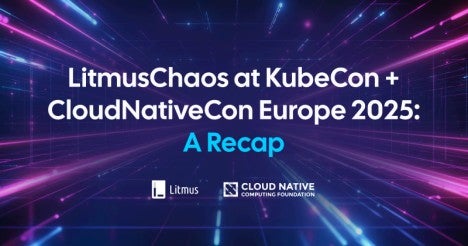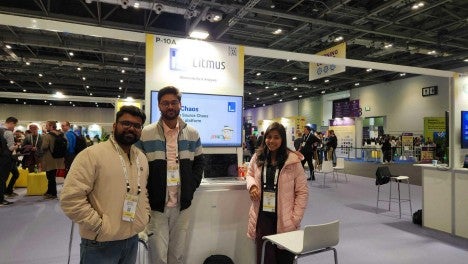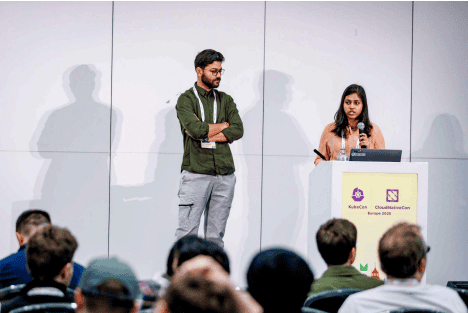
The cloud native community recently converged in London from April 1 – 4, 2025, for an incredible edition of KubeCon + CloudNativeCon Europe. From our perspective at LitmusChaos, it was a week filled with inspiring sessions, engaging booth interactions, and deep discussions about the future of chaos engineering.
Sessions That Made an Impact
LitmusChaos played a central role throughout the event with two key sessions that provided deep insights into our journey and the broader realm of chaos engineering in cloud native systems:
1. Lightning Talk:
We explored the essence of LitmusChaos and its roadmap to becoming a CNCF Graduated project
2. Maintainer Track Talk:
This session delved into our latest features, covering enhancements in resilience testing, observability, and scalability, and discussed challenges faced by developers and SREs.

Booth Highlights: Engaging Demos and Discussions
At our booth, we connected with a diverse audience ranging from seasoned chaos engineering experts and existing 2.x users to beginners exploring reliability for the first time. Key topics discussed at the booth included:
- IAM Integration for Cloud Providers Based Chaos Faults:
Demonstrations showcased how LitmusChaos integrates with various cloud IAM systems to simulate and mitigate faults in a secure environment.
- Automated Chaos Injection in CI/CD:
Through tools like LitmusCTL, SDKs, and Terraform, we explored how to incorporate chaos experiments seamlessly into CI/CD pipelines, making resilience a natural part of development cycles.
- Tool Comparisons:
Detailed conversations compared various chaos engineering tools, helping attendees understand LitmusChaos’ unique capabilities and positioning in the ecosystem.
- BYOC (Bring Your Own Chaos) – Litmus vs. Harness:
Participants engaged in comparative discussions that shed light on best practices and unique approaches between LitmusChaos and other platforms.
- Foundations of Chaos Engineering:
For those new to the field, our booth served as an educational hub, where core concepts and benefits of chaos engineering were introduced.
- Types of Chaos Faults:
We discussed various fault categories from Kubernetes/Linux specific issues to those related to cloud providers and how our solutions address them.
- Upgrade from 2.x to 3.x:
We listened to community feedback about our 2.x versions and shared insights on transitioning to 3.x, highlighting improvements and new features.
Reflecting on a Successful Engagement
The event was an opportunity for us to reconnect with our community and engage in meaningful dialogue. From clarifying doubts to brainstorming on innovation, every interaction enriched our collective understanding of building resilient cloud native systems.

Stay Connected with LitmusChaos
Even though KubeCon + CloudNativeCon Europe 2025 has wrapped up, the conversation continues.
We’re an open, welcoming space for chaos engineering enthusiasts, platform engineers, reliability folks, contributors, or anyone simply curious to learn more about building resilient systems. And we’d love to have you join us!
Here’s how you can get involved:
- Visit the LitmusChaos website to learn about the project, use cases, architecture, and everything chaos engineering.
- Join the conversation on the #litmus channel in the Kubernetes Slack, ask questions, share ideas, or just hang out with the community.
- Contribute to the project! Check out our Contributing Guide and start with an issue, suggestion, or PR — every contribution counts.
- Subscribe to the LitmusChaos YouTube Channel for community meetings, demos, tutorials, and project updates.
- Follow @LitmusChaos on Twitter/X or @litmuschaos on LinkedIn for the latest news, release updates, and community shoutouts.
- Explore the LitmusChaos blog for stories, tutorials, and deep dives. Want to share your own experience with Litmus? Publish a blog on DEV.to and tag it with #litmuschaos, we’d love to read it!
As we reflect on the success and learnings from KubeCon + CloudNativeCon Europe 2025, we appreciate everyone who participated and shared their valuable insights, and we look forward to our next chapter in creating resilient systems.
Thank you for being part of our journey. Cheers.